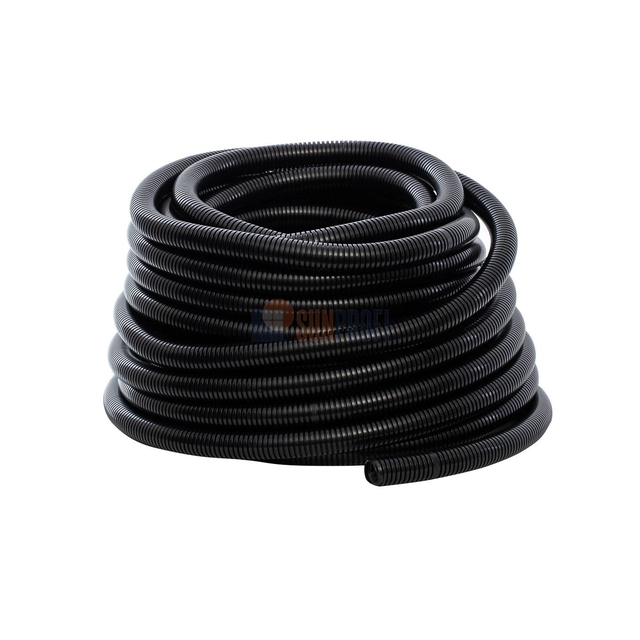Corrugated pipes, called conduits, are used to run photovoltaic cables along the roof in places not covered by the panels, up to the distribution board (unless other solutions are used).They not only provide excellent protection against mechanical damage to cables/wires, they also protect against all adverse external factors such as UV radiation, water, etc.They are equally valuable when it comes to organizing cables and electrical wires.
The conduit is:
- light,
- flexible (thanks to the corrugated structure),
- elastic (which allows for its installation without special tools and equipment),
- resistant to mechanical damage and extreme weather conditions,
- has low relative elongation.
Due to the fact that corrugated pipes are made of PVC, polyamide or polypropylene, they do not corrode as is the case with metal casings.The conduits are non-flammable, which means that in the event of a fire hazard they reduce the risk of electric shock.
Black corrugated pipes are used both inside buildings and for the protection of cables hidden underground or ground drainage.Regardless of the location, conduits are easy to replace without damaging cables when the need arises.Due to the fact that corrugated pipes are resistant to fire, they are often used in places with an increased fire risk (e.g. wooden buildings, attics, lofts, photovoltaics).In the case of installing conduits in place of existing cables, a great solution is seamed conduits, which can be placed over previously installed cables without the need to dismantle them.
RKLSP and RKSSP type corrugated PVC electrical installation pipes are a version equipped with a steel PILOT, which enables easier pulling in of electrical cables.
Technical data- Outer diameter – 32 mm
- Inner diameter – 25 mm
- Length – 25 m
- lungs (symbol - "L")
- heavy ("T")
- super heavy


